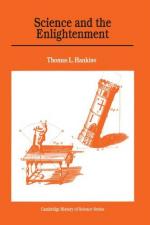
|
| Name: _________________________ | Period: ___________________ |
This quiz consists of 5 multiple choice and 5 short answer questions through Chapter 4, Chemistry.
Multiple Choice Questions
1. In Chapter 1, who claimed that his "principle of least action" proved the existence of God?
(a) Pierre-Louis-Moreau de Maupertuis.
(b) Malebranche.
(c) Newton.
(d) Leibniz.
2. The narrator explains in Chapter 3 that ________ and ________ were the best examples of subtle fluids.
(a) Heat / air.
(b) Electricity / heat.
(c) Water / air.
(d) Electricity / water.
3. Who carried rational mechanics to the highest point of generality and abstraction that it was to reach during the Enlightenment?
(a) Diderot.
(b) Hermann.
(c) Lagrange.
(d) Daniel.
4. All of the following philosophers at the University of Leiden followed Newton's lead in organizing experiments except for whom?
(a) Boerhaave.
(b) Locke.
(c) Musschenbroek.
(d) 'sGravesande.
5. Throughout the Enlightenment, reason was usually extolled in the same breath with ________, the other key word of the Enlightenment.
(a) Nuture.
(b) Science.
(c) Religion.
(d) Nature.
Short Answer Questions
1. The ________, who had been leaders in experimental physics during the seventeenth century, continued to hold a prominent place until their order was suppressed in 1773.
2. In Chapter 4, Turgot concluded from the experiments of ________ and ________ on evaporation in a vacuum that extensibility was a property not only of air but of all substances in a vaporous state.
3. Who argued in the "Preliminary discourse" to the "Encyclopedie" that mathematics was basic to all of physics, according to the narrator in Chapter 3?
4. What was the name of the philosopher who was the leading scientific experimenter in seventeenth-century England, who had agreed that he had never seen any "inanimate production of nature, or of chance, whose contrivance was comparable to that of the meanest limb of the despicabilist animal"?
5. Who made the first extensive series of investigations of electricity in his book "De Magnete," according to Chapter 3?
|
This section contains 285 words (approx. 1 page at 300 words per page) |

|




